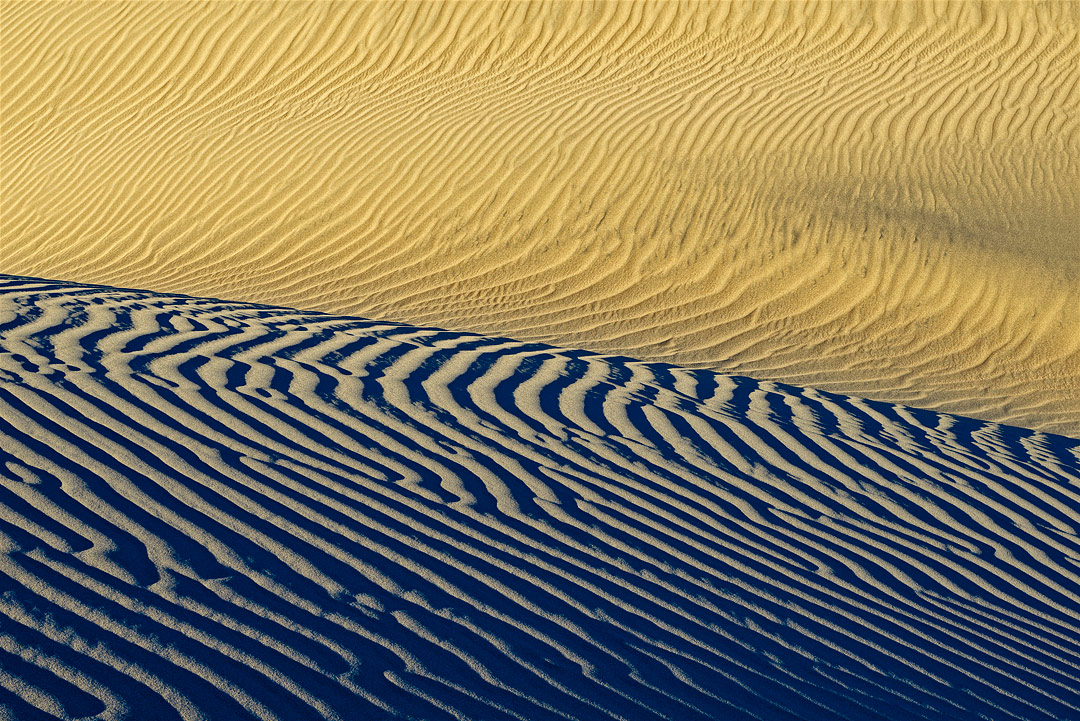In December of 2015 I attended a photography workshop in Death Valley National Park, California. The first morning, well before sunrise, we ventured out on to the Mesquite Dunes to be ready for the light. I recall the sand—and consequently my feet—being extremely cold. If you are visiting in December, expect the nights and mornings to be very cold.
While I live in Tucson, Arizona, which is most certainly a desert, there are no sand dunes. Such a massive expanse of patterns and shadows is almost overwhelming: promising compositions are everywhere. Perhaps the biggest challenge was being there with a group, since we were trying to stay out of each other’s way and not track footprints across the sand that we would regret later.
On the dunes, there are few plants to serve as the focal point of a composition; generally, a composition is all about patterns, which is why sand dunes are such a popular black and white subject. But this photograph is really about patterns and color, not just patterns alone. As the sun rises, the light grazes across the dunes at a shallow angle, and that angle changes quickly. At one point, I turned around and saw this scene starting to form: the foreground dune was just beginning to catch some light, but the shadows were still picking up the deep blue from the sky, while the background dune was in full golden yellow light. I knew that I did not have long before this scene was lost forever. Fortunately, my 85mm tilt-shift lens was already on the camera, but even so, I was frantically fiddling with the tilt control in a race against time to get the entire scene in focus. In the end, this photograph was taken slightly after the peak moment.


